Tips for Planting Bulbs
September 22, 2025
Bulbs in Bulk- When purchasing bulbs in bulk, check the quality to make sure the bulbs are firm and not moldy or squishy.
Full Sun- For hyacinths, choose a site that gets full sun, though most daffodils can tolerate part shade.
Good Soil- Make sure soil is rich in organic matter and well drained because bulbs are highly susceptible to rot.
Make Them Pop- Give bulbs a dark green backdrop, such as an evergreen hedge, for making their colors pop.
Plant in Masses- Plant bulbs en masse, not in small clusters, to create the biggest impact.
Sweeps of Color- Plant in sweeping drifts of color, not in uniform rows, for a bigger visual punch.
New Heights- Consider hillsides for taking advantage of varying heights of flowers, making a planting bed seem larger.
Color Block- For the boldest effect, plant in masses of one color -- and one that complements adjacent plantings of spring annuals or blooming shrubs and trees.
Planting Bulbs- Save time – and your back – by placing bulbs, tip end up, on top of the planting bed, then cover them with a layer of several inches of soil, instead of digging individual holes for bulbs. Don’t worry if the bulbs tip over; they will work themselves upright.
Extend Growth- Extend the bulb bloom season by combining varieties that bloom early, mid- and late spring.
Contrasting Colors- Under plant beds of annuals, such as pansies or violas, with bulbs to create a complementary-color foil and extend the bloom season.
Mix Flowers- Combine container gardens of fall and winter annuals with bulbs for surprise additions next spring.
Avoid Mulch- Don’t mulch over bulb plantings because that layer of insulation withholds extra moisture in the soil and could cause bulbs to rot.
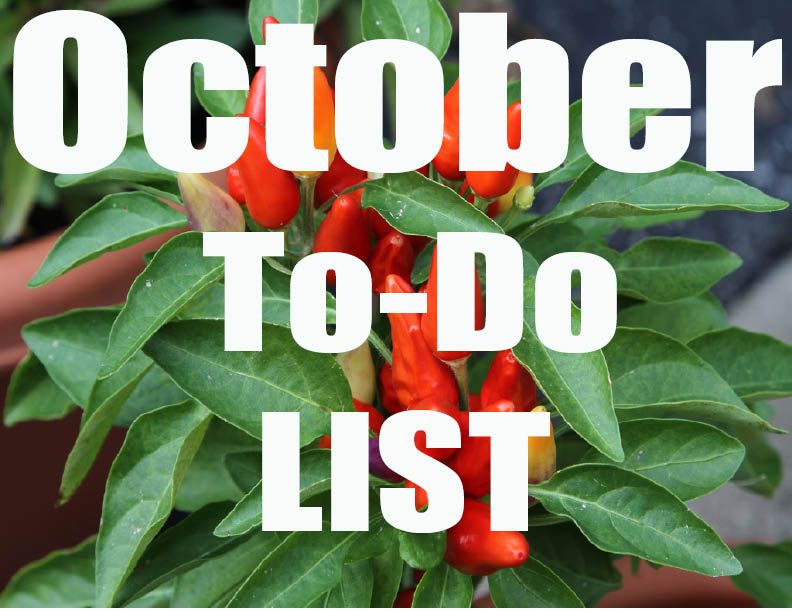
Fall for planting in your landscape this month! Most people plant trees, shrubs and ground covers in spring, but fall is really the best time to plant. By planting in fall, which is October through mid-December, you get to take advantage of the great opportunity to get plants established. Root growth, which is the first priority after planting, occurs during fall and winter in Louisiana when shoots and flowers grow slowly. OCTOBER TO DO LIST: -Plant all the trees & shrubs you'd like because fall is the best time to plant in your landscape! -Anytime this month is a great time to plant cool-season annual flowers, except pansies, which some choose to wait for until late October or November. All will benefit from a slow-release fertilizer and regular irrigation, about 1-inch per week. A deep watering is more beneficial than every day mini watering sessions. -Use mulch to conserve moisture and smother weeds. An ideal amount is 3 inches thick. -Now is the time to plant citrus trees! Try: kumquats, satsumas and Louisiana navel oranges. -Sow cool-season seeds for incredible spring color. -Freshen up container gardens, and consider ornamental grasses, mums, snap dragons and crotons for beautiful fall-themed color. -Divide and replant clumping perennials. -Plant cool-season vegetables. Stagger plantings across a few weeks or months, so they can be harvested in a steady supply, not all at once! -Reduce watering deciduous fruit trees, so they will be allowed to go dormant. -Keep bird feeders stocked and bird baths clean because around the 20th, the fall bird migration peaks in our area. -Around Oct. 7, many Ruby-Throated Hummingbirds will depart Acadiana for their tropical wintering. Keep at least one feeder up since several other hummingbird species may spend the winter in your backyard. -Dig caladium bulbs once the foliage dries, and store in a warm, dry location. -Prune oleanders after flowering to encourage branching. -Check peach trees for scale. If needed, spray dormant trees with a dormant oil spray. -This is a great time to sample your lawn soil and correct any pH issues. -Prune runaway stems of azaleas now, but don’t get carried away while pruning! The spring flowers are being set, and over pruning will reduce the spring blooms.
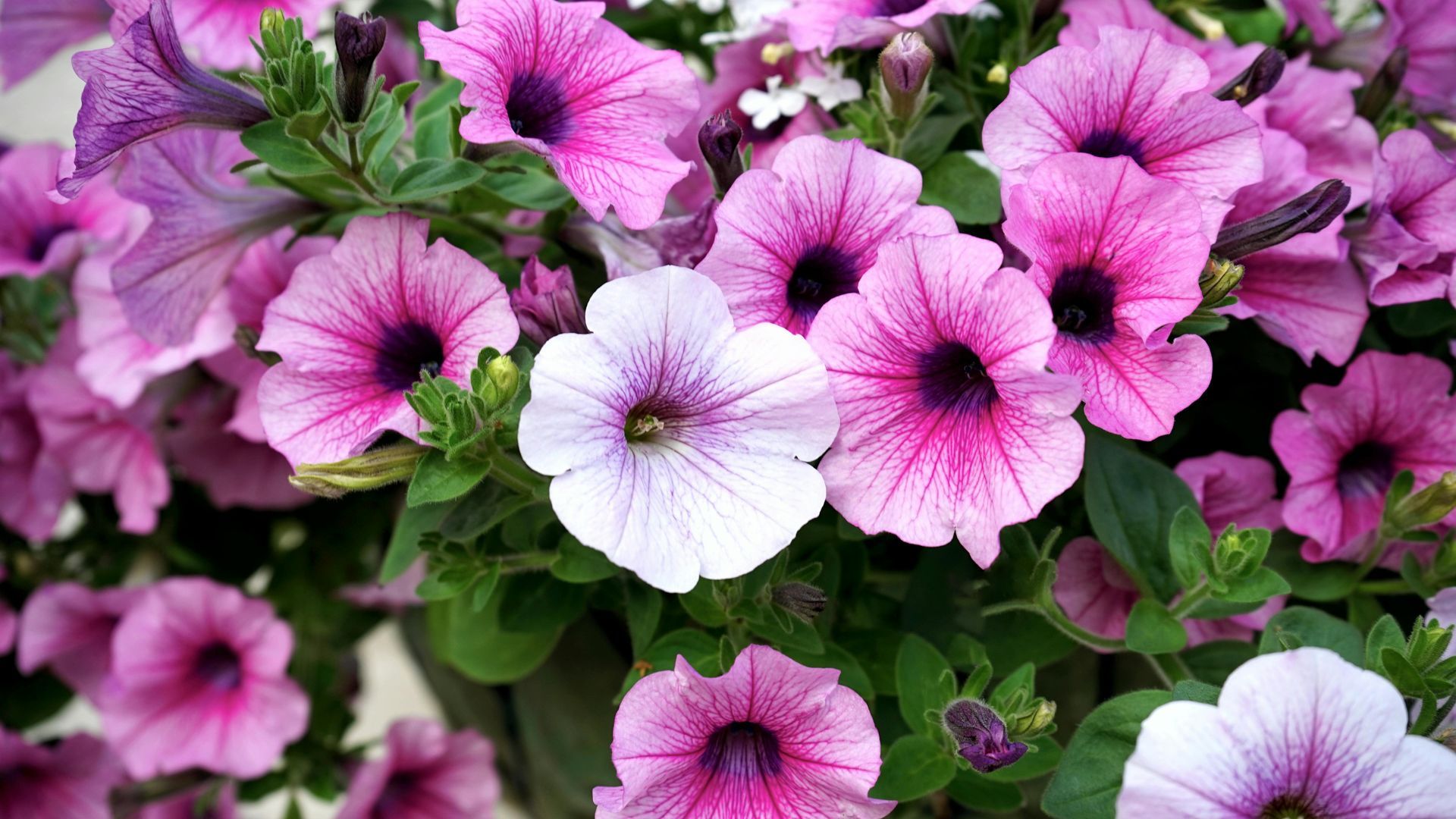
October is all about pink in support of breast cancer awareness. According to the National Breast Cancer Foundation, one in eight women in the United States will develop breast cancer in her lifetime. Men also can get breast cancer. Are you asking yourself, what does this have to do with gardening? Our landscapes are an extension of our homes and a statement to those around us. Why not honor breast cancer patients and survivors by going pink in your flower beds? You can show your support and bring awareness to this devastating disease. It’s not just public landscapes, hospitals and cancer centers that can make an impact. So can you! If you don’t want to make the long commitment, plant in small containers or try planting annuals that can be changed out. Many Louisiana Super Plant selections have shades of pink to choose from as well! Both Amazon and Jolt dianthus are excellent Louisiana Super Plant selections for fall that come in an array of pink colors. Ranging from delicate pink to hot pink, these can make quite a statement. There are other Dianthus varieties thinking pink as well, and all perform best in full to part sun and are great for attracting butterflies in late fall and early spring. They make great cut flowers that you can share with friends or family members fighting the disease and to help celebrate survivors. Another real impactful choice with bright pink blooms are petunias. The Supertunia Vista Bubblegum, an LSU Superplant, boasts bright, prolific, pink flowers. This mighty petunia is known for its long-lasting flower bloom in the landscape. It has a mounding, spreading habit that can grow up to 3 feet in all directions, with a height of 16 to 24 inches. It prefers full sun to produce the maximum amount of blooms. There are other pink petunias as well- from neon pink to light pink, and even pink with white stripes! Get creative with your supportive garden! Snapdragons are another selection “dressed” in pink for October and beyond. With varieties available in tall, medium, and short, you can have an array of pink, or mix pink and white or any other combination in flowerbed rows or container gardens. If you want something more permanent, try shrubs. Three fall-blooming Louisiana Super Plants with pink flowers are Conversation Piece azalea, Aphrodite althea (rose of Sharon) and Luna hibiscus. All three make excellent shrubs for sunny areas in the lawn and will bloom in the fall, year after year. Dream roses and Belinda’s Dream roses are both Louisiana Super Plant selections that have pink blooms that are open in the fall. The Belinda’s Dream can be another superb cut flower choice to share with family and friends. Specialty roses arrive in our garden center in mid-January, so think ahead for next year starting this New Year! Penny Mac hydrangea is another Louisiana Super Plant. It’s a repeat-blooming hydrangea that can produce large flower clusters of pink or blue beginning in late spring and will continue to bloom on new growth into the summer and fall. To influence flower color, you can treat the soil around the bushes with lime and superphosphate in March and again in October each year. Your soil should be a pH of 7-8.5 to help achieve the pink color. It may take years for the shift to pink to occur if your plant typically blooms blue. Many warm-season flowers planted in late spring and during the summer are still blooming and going strong in October. Some Louisiana Super Plants that come in shades of pink are Lucky Star and Butterfly pentas, Intenz Classic celosia, Baby Wing begonias, Senorita Rosalita cleome, Sunpatiens, Bandana lantanas and Kauai torenia. Nearly every Louisiana Super Plant selection comes in some shade of pink. Other cool-season flowers displaying various shades of pink include pansies, violas, dianthus, snapdragons, garden mums, calendula, ornamental kale and cabbage. Perennial flowers like gaillardia, verbena, Mexican petunias, cupheas, guara, salvias, coneflowers and rudbeckias can also be found in various shades of pink. They establish well when planted in fall and will perform better next year if they’re planted now. Whether it’s delicate pink, hot pink or any shade in between, show your support for breast cancer awareness this October with plants. Stroll through the garden center to be paired with the best pink plant(s)! Article by LSU Ag Center. Visit online here.
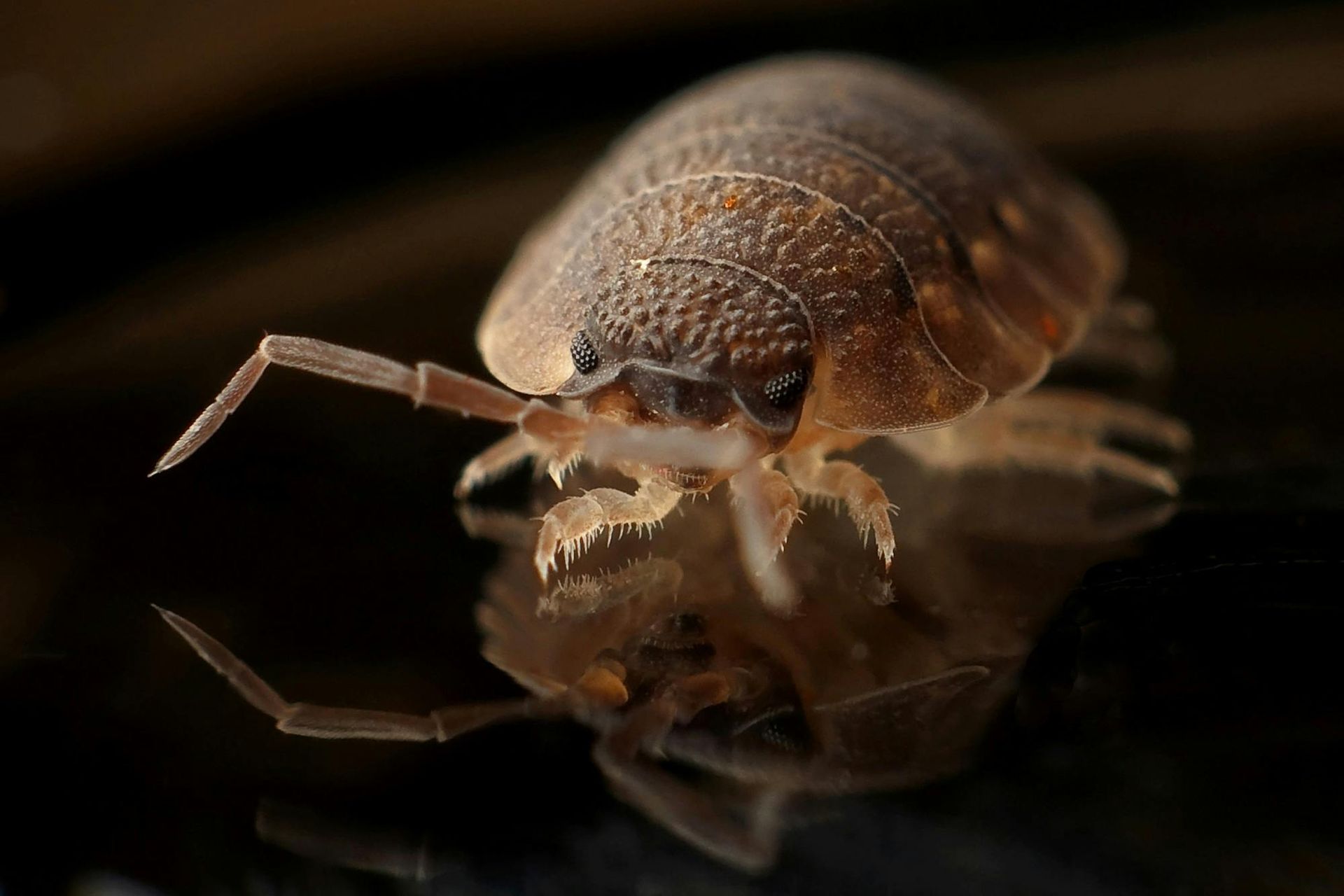
Please enjoy this introduction on some of the best pest-repellant products on our shelf. All these products are kid- and pet-safe and are compatible with organic gardening! Captain Jack’s Deadbug is a liquid, ready to use spray that will take care of your caterpillar, spider mite, and other chewing insect issues. The main ingredient is Spinosad, which is a soil dwelling bacteria that kills insects without the use of harsh chemicals. This spray can be used on fruit and vegetable plants, ormanmentals, and flowering plants. To use, you just spray on the tops and bottoms of foliage in early morning or late afternoon for maximum and most effective coverage. This is a Bonide product that is great for organic gardening. Ferti-lome’s brand of Horticultural Oil is an oil that you mix with water in a hand sprayer for easy application. This product controls insects, mites, and scale and will kill all stages of insects, including eggs. Great for roses, flowers, houseplants, fruit and vegetable plants, and trees. The oil coats the plant for a nice shine and apply during early morning or late afternoon. You can apply this product as often as you need since it is an organic product. This is a great product to apply right before spring or fall begins for preventative maintenance for the coming season. Bonide Repels-All has a blend of ingredients that causes irritation to the animal's nasal passages for a harmless application to repel animals. This product repels armadillos, birds, deer, rabbits, racoons, skunks, squirrels, and more lasting up to two months. To apply, just put an even coat around the desired area. It is effective in any season and biodegradable and safe to use around kids and pets. Come & Get It Fire Ant Killer , another Ferti-lome product, is a fantastic product to get rid of those pesky fire ants. This product has that great Spinosad ingredient that will kill the insect without the use of harmful chemicals. Applying an even spread around the ant pile in the early morning or late afternoon is the most effective method. Ants will then carry the granules back to the mound. Diatomaceous Earth is a great granule product that is perfect for indoor or outdoor use. This product is effective against most crawling insects. Applying a light and even coat around the desired areas is the most effective way to get rid of those pesky crawling insects. Always make sure to read product labels thoroughly and carefully for application instructions and warnings. Each product has unique applications to follow. Come in to All Seasons to find any of these products. Our staff is knowledgeable and ready to help you solve any of your pesky insect problems!
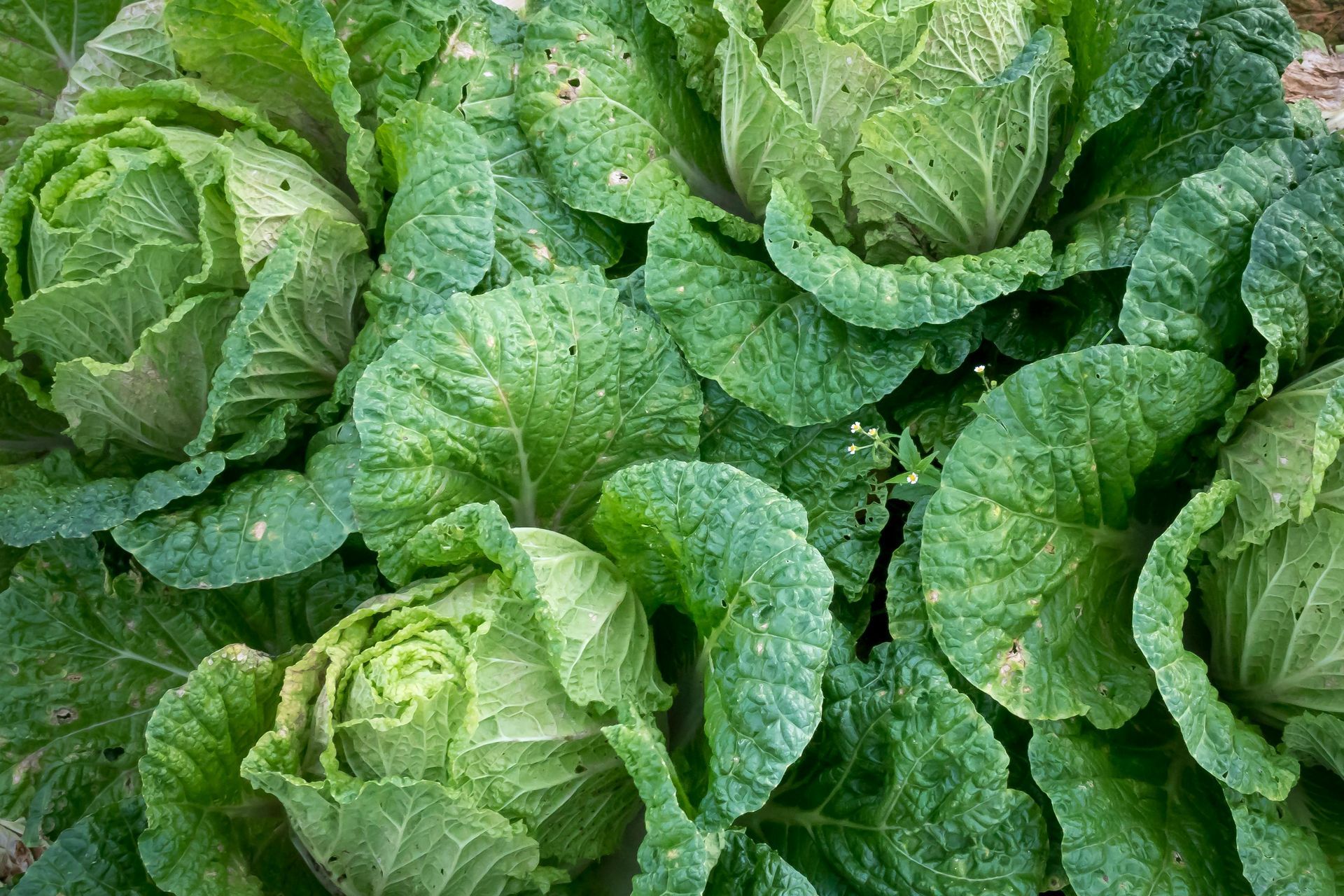
Are you looking to add extra appeal to your fall through winter landscape or container gardens? Ornamental Cabbage & Kale have all the frills! Planted alongside chrysanthemums, snapdragons and pansies, among others, ornamental cabbage and kale add distinctive bold texture and vibrant seasonal color. Frequently called “flowering” cabbage and kale, these fall favorites are not flowers at all, but large dense rosettes of colorful, frilly foliage richly variegated with cream, white, green, pink, rose and purple- the purple fall palette. While these plants are similar to the cabbage and kale cooked in the kitchen and consumed in salads, soups, stews, etc, it is important to note that ornamental varieties are cultivated for color and shape rather than taste. If you would like to plant these ornamental selections and use them in your kitchen, use them as a garnish only. Trust us- they are more attractive than tasty! We also have the edible varieties of cabbage and kale that should be planted to consume through your winter! Ornamental Cabbage- Leaves tend to have a smoother appearance with a wavy leaf edge. Ornamental Kale- Leaves are frilly-edged and sometimes deeply cut or lobed. These cold-tolerant annuals improve in appearance after a frost or two, bringing out more intense and brilliant colors in their foliage-perfect for use as both an autumn accent plant It is popular to plant them in your fall-winter borders, or planted in containers. They typically grow around 12-18’’ high and wide, and need about 12’’ spaced between them when used as a border. They enjoy full sun in an area with rich, moist, well-drained soil. When you plant them in the ground, add some compost or Happy Frog Soil conditioner to each planting hole to enrich the native soil. Also, sprinkle in a small handful of starter fertilizer, like Osmcote, to get your cabbage/kale off to a healthy start. When you plant them in a container, it is best to plant with a light-weight, nutritious potting soil, like Happy Frog or Strawberry Fields potting soil. We have these and several other options to pick from, but always go with a potting soil blend as these are specially formulated for plants going into pots. Don’t forget to add a slow-release fertilizer, like Osmocote. This will feed your plants all season long with no effort from you! You will enjoy ornamental cabbage and kale during our colder months. Once they begin to “bolt” in the Spring, they send up their flower stalks; that can be your signal to pull them out and replace them with Spring-Summer annuals. For this cool season, try planting them in your flower/landscape beds and/or container gardens for the long-lasting color and texture interest they will bring into your surroundings!
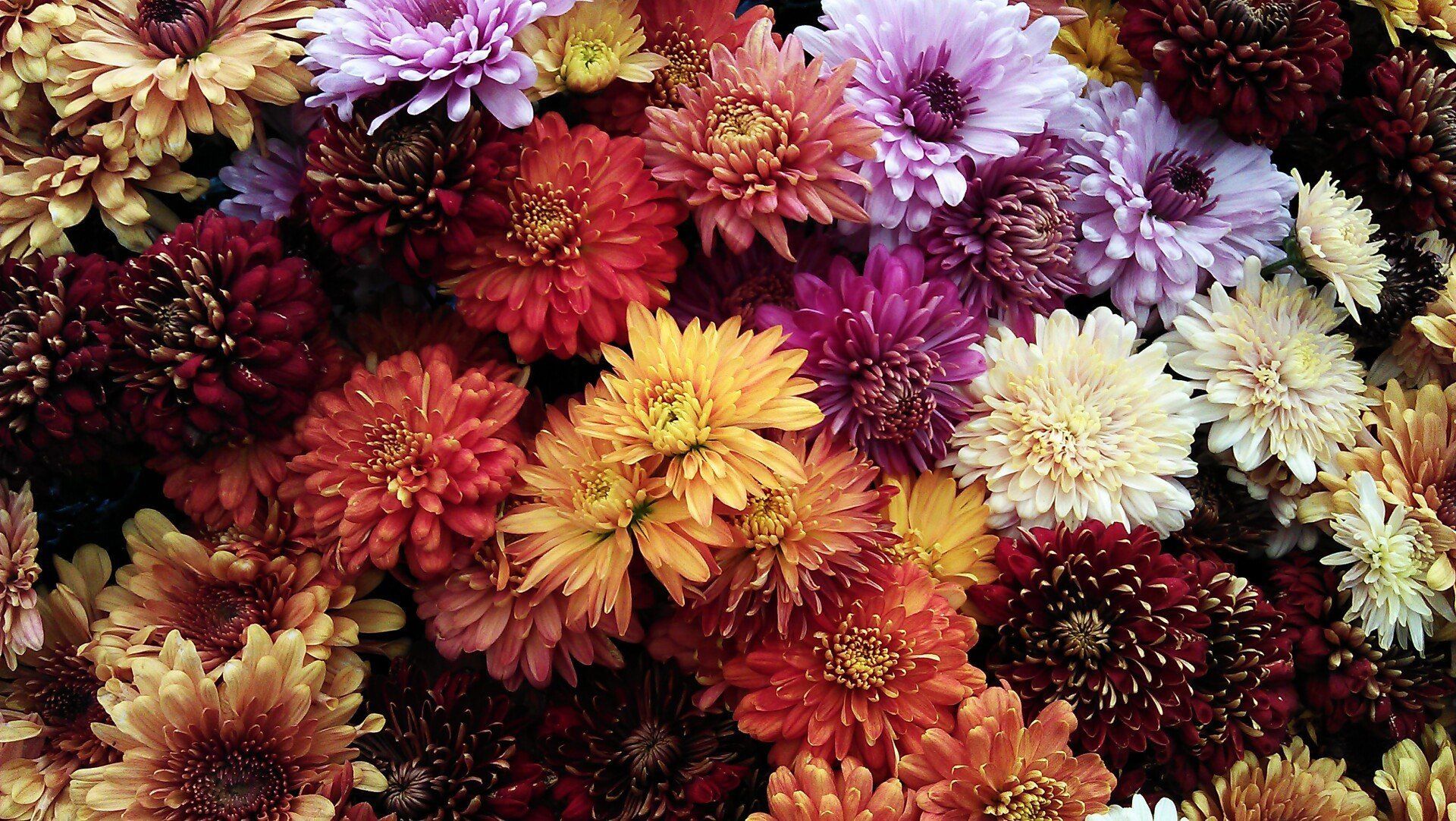
LET’S TAKE A LOOK AT A FEW QUESTIONS OFTEN ASKED ABOUT FALL MUMS: ARE MUMS HARDY? Yes and no. There are both hardy and non-hardy mums. The mums we have are perennials, and if planted in your landscape, cut back to the ground after a freeze event, should come back up for spring! Most mums you seen= in a florist shop mixed in arrangements are probably non-hardy varieties. SO WHY DID MINE NOT COME BACK IN THE SPRING? Even though the mums sold in the fall are hardy varieties, there are some things to consider. If you would like mums as perennial plants in your landscape beds, plant them as early as you can. The plants need to establish a strong root system before the winter, therefore plant them in the late summer as soon as you see them arrive here. Use the same soil amendments and fertilizers that you would use for your other perennials. Mums are often used as fall color in containers and then planted once the flowers are spent in the late fall. Usually this is too late for a root system to establish before any winter freezing. I HAD ONE COME BACK AND IT GOT HUGE! WHAT’S THE DEAL? The mums you see in the fall have been consistently cut back by the growers through the spring and summer. Doing this controls the size of the plant, creates a dense shape, and delays blooming until the fall. On their own, mum tends to grow quite large and will bloom in the mid to late summer. They need to be cut back in mid-summer for fall blooms. HOW DO I GET THEM TO FLOWER A LONG TIME? Length of flowering time is directly related to temperature. The warmer the temperatures, the quicker the flower will open, bloom, and fade. As temperatures cool in the fall, the blooms give color for a longer period of time. Does this mean you need to wait to buy your mums? It just depends on your needs. Use mums whenever your summer plantings or containers are ready for a seasonal change. Even mums bought early in the season will provide at least 3 weeks of color. Combine mums with pansies, crotons, fall marigolds, and ornamental cabbage and kale to extend your fall season of color.
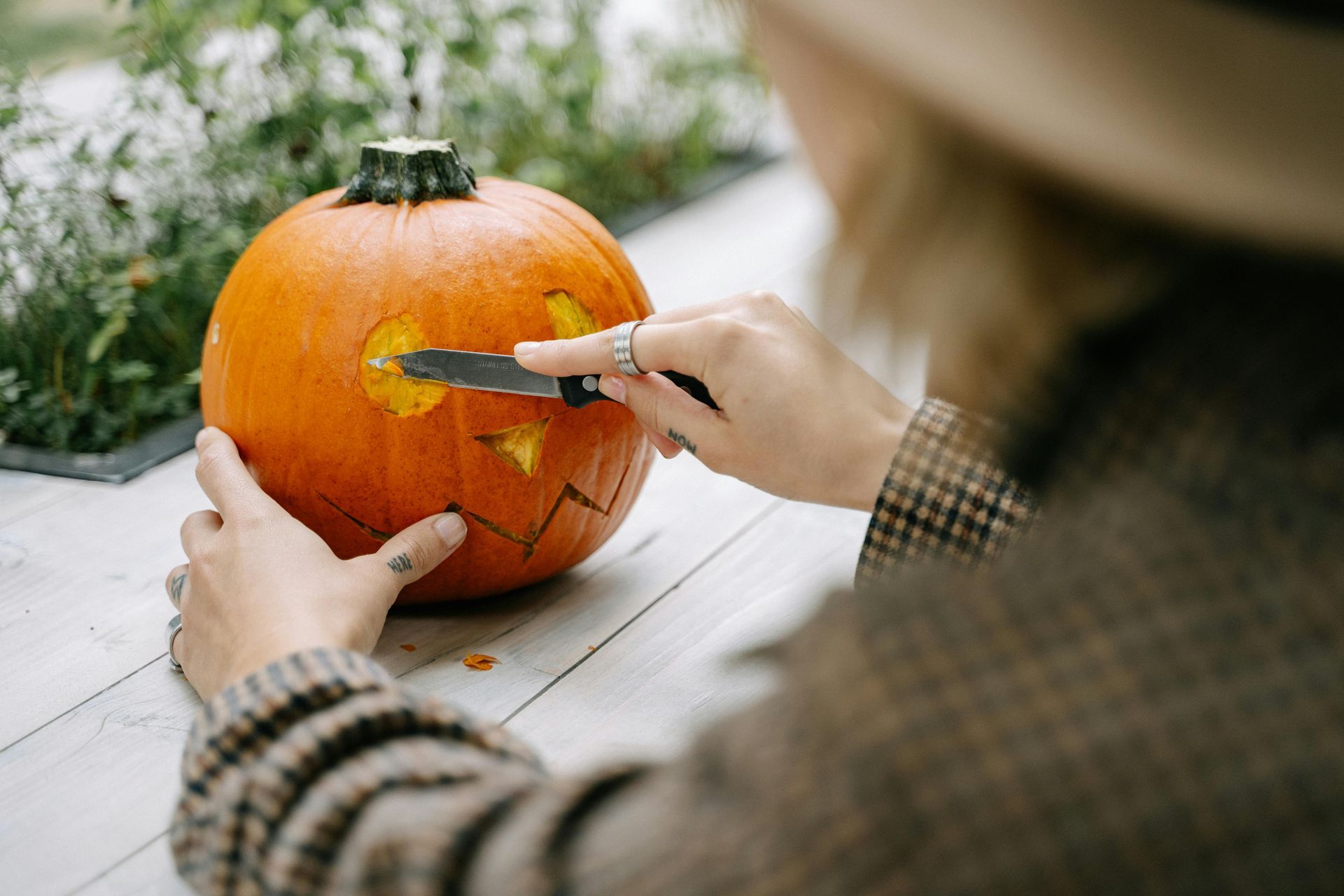
Learn how to preserve a carved pumpkin so your Halloween masterpiece will last all season long. With Halloween just around the corner, pumpkin-carving season is almost here. But we think the biggest challenge every year is exactly how to preserve your carved pumpkin and keep it from turning into a moldy, mushy mess before Halloween arrives. While there is no way to completely stop your pumpkin from rotting since the process starts as soon as you cut into it, we’re sharing all the steps you need to take to ensure that your pumpkin lasts as long as possible this season. 1: Pick a Healthy Pumpkin First, make sure that you start with a fresh and healthy pumpkin. Choose a firm pumpkin with no soft spots and its stem intact. Don’t hold it from the stem to ensure it won’t break off easy. Starting off with a firm pumpkin means that your carved pumpkin has a good chance of lasting longer. 2: Get Rid of All the Guts Once you open up the pumpkin to carve it, it’s important that you rid the cavity of the guts. You want to make sure that the inside of your pumpkin is as clean and dry as possible, and that can only happen if you ditch all the pumpkin guts and seeds. 3: Use Petroleum Jelly To extend the life of your carved fruits, rub a thin layer of petroleum jelly on the inside of the pumpkin to reduce mold and slow decay. 4: Refrigerate Your Pumpkin If you can, refrigerating your pumpkin each night will go a long way in helping to rehydrate your carved pumpkin (and keep it away from any bugs or critters). This is an especially good idea where we live! Put the carved pumpkin in a small garbage bag before putting it in the fridge. 5: Soak Your Pumpkin Overnight Another method for rehydrating your pumpkin and keeping it fresh is to soak it in water overnight. This is a great method to try if you notice that your pumpkin is starting to fade or wilt. You can fill up a bucket or tub, then put your pumpkin inside overnight for a refreshing bath. If you notice an improvement, you can try to do it again in a day or two. Make sure to use cold water, as hot or warm water can speed up the rotting process. Some people also swear by this method; however, instead of water, they use bleach.
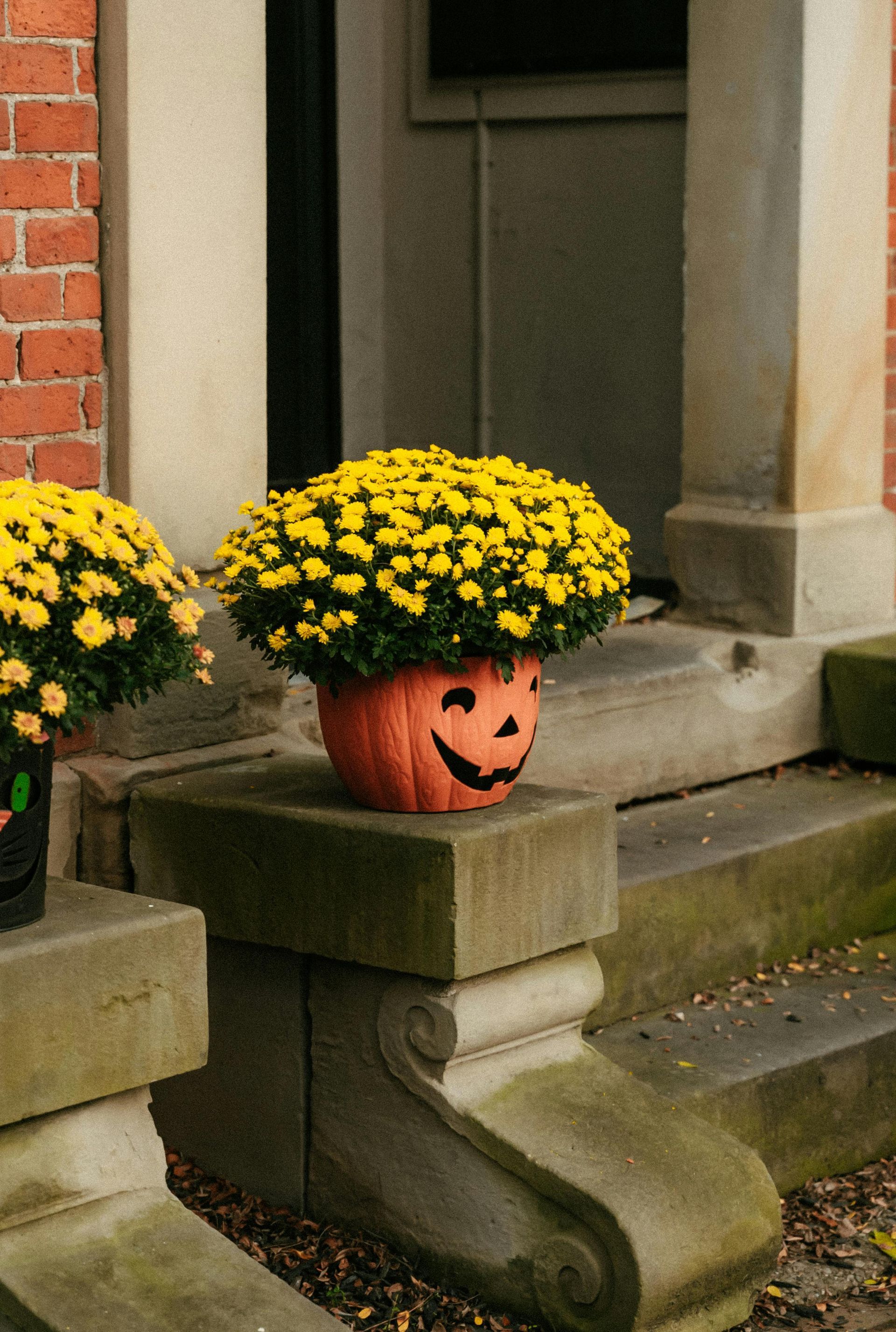
We think we know the perfect weekend activity for you – planting UP a pumpkin. It’s almost Halloween, so surely you have a pumpkin or two on your front porch. And if you do not, then act fast! We have large and medium traditional jack-o-lanterns, as well as funky cool specialty ones we call “Heirlooms.” In addition to those larger options, we also have little mini pumpkins! If you’re looking for a fun, creative activity to do with the family this weekend, here’s the scoop. This may be something you have never seen before, if so, do a quick search online for “pumpkin planter” to see the possibilities. Some pictures will have combinations of mums, fountain grass, pansies and more planted INSIDE of a pumpkin. If your heart desires a pumpkin planter like one of those, go for it! Just be aware that the plants will still need regular watering, and you will need to cut a hole in the bottom of your pumpkin to allow for drainage. To avoid an overly saturated, or rotten pumpkin, you could plant up your combination of plants into a smaller pot, and then place that pot inside of the carved out pumpkin. Then you can remove the pot and water it separately from the pumpkin. An idea fun for the kiddos is to make a pumpkin “person!” You (or they) can draw or paint a face onto the pumpkin, and plant the face’s “hair” inside the pumpkin, either directly or into a separate pot as stated above. Their “hair” can be something long and “curly” like a Creeping Jenny or another trailing plant, or their hair can be spikey like an ornamental grass! Like the afro look? Plant a Mum inside! Be silly, or scary! Let either your kids or your imagination “grow wild!” Another idea is to carve out your pumpkin, without cutting a hole in the bottom, and plant succulents! Not only are succulents super cool and trendy, but they require such little water at this time of the year. So if you plant them now, it is very possible that you could go all the way to thanksgiving without ever having to water them. Just give them a light misting on a weekly basis to keep up the humidity around the plants. This falloween season is a fun and special time full of memory-making potential. Come pick a pumpkin and plant!
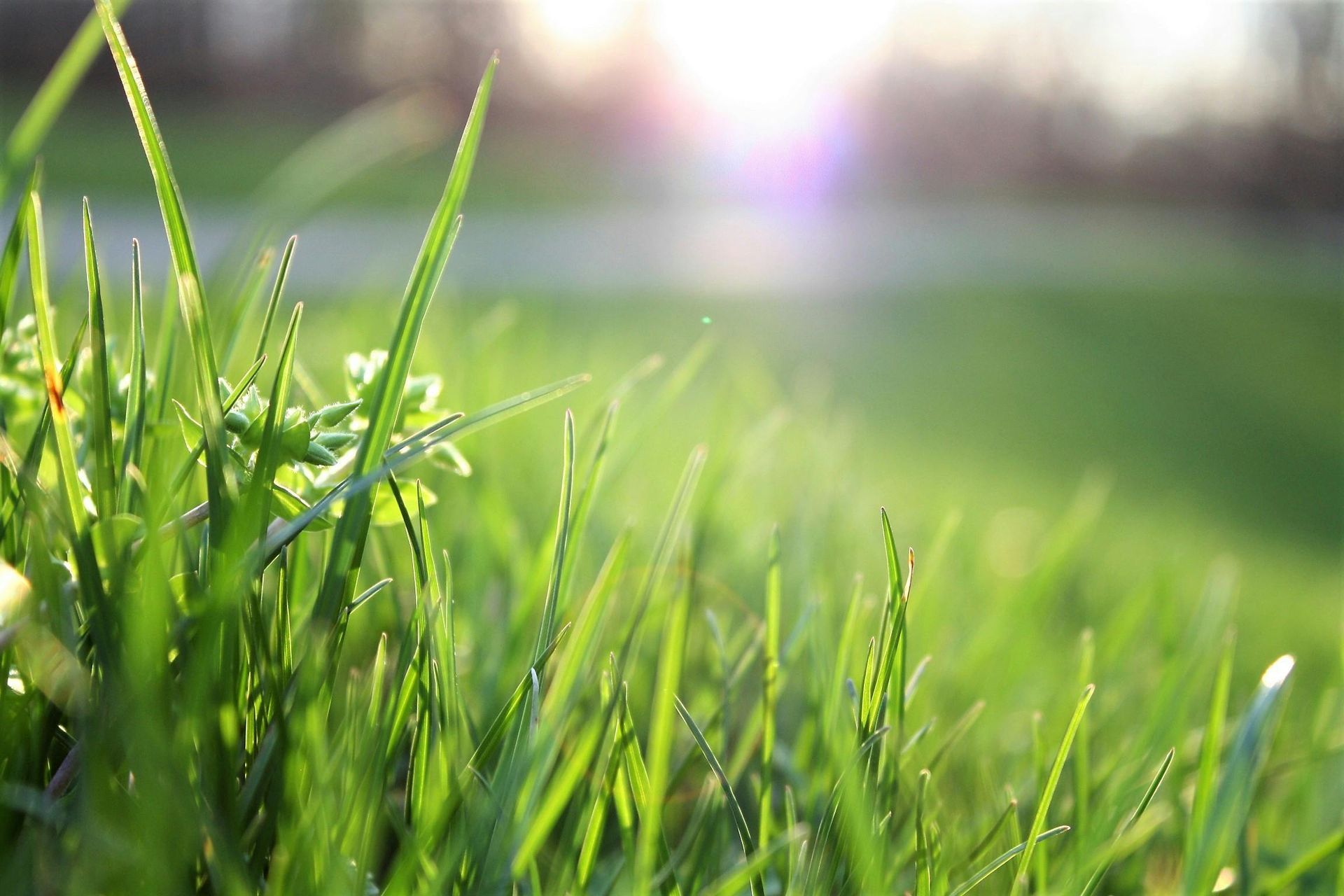
Winterizer may sound like the name of a Disney villain, but it’s a helpful product for your lawns and shrubs to use at this time of the year! What is Winterizer? Winterizer is a granule product that we sell in a 20 lb bag. It helps build a vigorous root system during the winter for your shrubs, trees, evergreens and all types of grasses- AKA your lawn. The bottom line is using Winterizer will enhance winter hardiness, boost the shrub’s “immunity” and promote earlier greening up in the Spring, which is what we all look forward to after seeing a couple months of brown! For your Spring-blooming shrubs, Winterizer encourages them to set their fresh buds. You know what this means? BLOOMS! If you are confused about why to place this on your lawn and shrubs now, when temps will (hopefully) begin to dip, it’s because your plant’s roots do not go dormant, even though the top part may be “sleeping.” The roots don’t go dormant because the ground never freezes. Even if we get an ice dusting, below ground stays a consistent temperature. “When a customer applies Winterizer, we see a huge difference in their lawns and landscapes the following Spring season,” says All Seasons owner Peter Mayeux. “We can always tell when a customer applies Winterizer. The biggest benefit for us to see is customers excited about their lawns and landscapes once spring appears. They always thank us for encouraging them to apply this product in fall!” The application quality depends on your personalized space, but there are clear directions printed on the product’s bag. If you’re concerned about your pets after application, don’t worry! When this is applied correctly, it is 100% pet-safe. We would be happy to provide you more information in our Plant Health Care section, so visit our Garden Center to get it growing! .

Are you looking to plant a spooky-looking arrangement for Trick-or-Treaters? Maybe you want to give the gift of a brain-looking bloomer as a tricky treat to your favorite gardener? Or, maybe you just love cool-looking plants with a unique bold color to add to your collection? Whatever the reason, it’s the season for the Twisted and Intenz Celosia! Both the Twisted Orange and Red Celosia, also known as Cockscomb, have a wavy, ocean coral or brain look (if you’re in the Halloween mood) to their blooms. The Intez Celosia blooms vibrant purple spikes. All of them have bold color and attractive foliage throughout the season. These colors mix in with other fall favorites, like the pumpkin-like round orange-blooming marigold, various tones of ornamental peppers, the ruffled-leaf ornamental cabbage and kale varieties, snapdragons, petunias, etc! They love full sun, which is considered 6 hours or more each day. They are considered heat-tolerant, which is great for some of those 80+degree F “fall” days we have! They can also take temperatures down to 32-degrees F. Anything lower than that would need protection. They reach anywhere from 16-20’’ tall while spreading 12-14’’ wide. If you want to plant them in your flower beds, we recommend spacing them 8-12 inches apart. They are ideal for containers, especially to draw interest for this “spooktacular” season! Please note- All Seasons may or may not have these plants in stock available to purchase at the time you come to purchase these. If you're ever looking for something specific, please call the garden center at 337.264.1418 or send an email question via this link prior to your shopping visit!
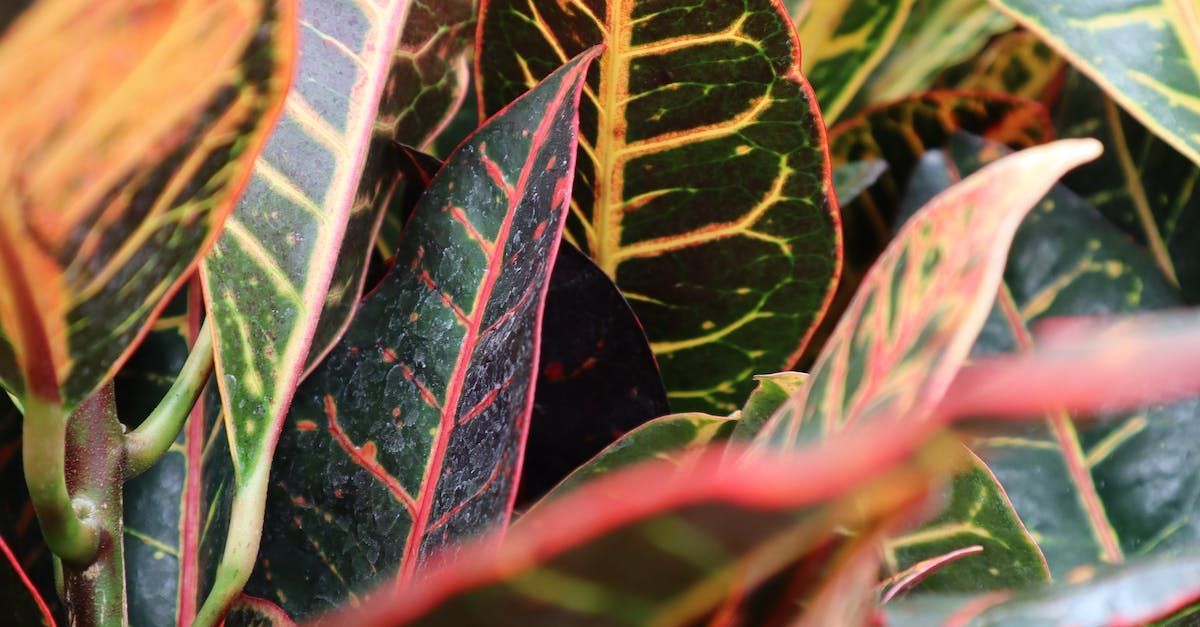
Fall is just around the corner, but we know it feels an awful lot like summer. These temperatures are likely to persist for the next month, if not longer, and true fall color on the trees in the area might be months further away. The tropical croton (Codaeum variegatum) is the cure for drab Louisiana landscapes needing a jolt of fall color. Though they come in many, many varieties, the classic croton that shows the most color is the popular Petra Croton. All varieties will show many shades of orange, yellow, and reds, including burgundy and almost purple in some types. There are a few tips with understanding how to properly and effectively use crotons in the landscape, or as potted plants for fall décor. First of all, crotons are fairly tropical plants, and have a cold hardiness somewhat similar to tropical hibiscus. Gardeners had become confident of their year-round durability after a period of mild winters in the 90’s and early 2000’s, but most of the past several years have been much too cold for a croton to endure without protection. Those who want to plant crotons outdoors and keep them from year to year should plant in a sheltered, south-facing location, and be prepared to bury them under pine straw and/or cover with frost blankets. Secondly, crotons are not especially fond of wet feet, and moisture will be much more of a problem in heavy, clay soils. Any crotons planted in the ground should be put in raised beds, or at least beds that have been heavily amended with a planting mix. Potting soil is also an acceptable amendment for annual plantings, as it is typically full of perlite, and makes an ideal substrate for not only crotons, but other annuals requiring excellent drainage, such as dianthus, pansies, or cyclamen (which will be coming a little later as temps cool). Crotons should only be watered when they are pretty much dry. It is acceptable to look for early signs of wilt before watering your croton for the first time, as the frequency of watering can vary widely based on environmental factors such as wind, sun, soil type and container size, etc. Another consideration for crotons is the right light. Crotons will show the best color with plenty of sun, but very exposed locations, especially long afternoon exposures, can almost be too much, and will cause leaves to be somewhat washed-out, and leads to more likely scorching from the combination of drought and sun exposure. Keep in mind that crotons like to be dry, but if you wait too long to water and it is in hot afternoon sun, the result will be brownish scalding on the upper leaf surfaces. Deep shade certainly keeps these beauties from burning, but the variegated colorings of the leaves will darken and the plants will be much less vibrant. I think that filtered light, or partial sun exposure, is ideal for these plants. Crotons make excellent container plants, and can even be brought in for winter and grown as houseplants! Container plantings are usually much more insulated from the diseases and headache associated with overwatering and heavy rains, especially if a light mix for indoor and tropical plants is used. Crotons are okay with less than full sun, and will certainly be happy for a few months indoors, especially if given a bright window to grow in our set outside on warm winter days. Crotons are basically grown for their foliage, and should be given balanced fertilizer, or fertilizers containing more nitrogen, such as Osmocote. Fertilizing should be done in early fall, especially if plants are expected to stay outdoors over the winter. Any fertilizing after early October should be achieved with a slow-release organic source, such as Blood Meal. These plants are fairly slow growing, so pruning should be minimal, but never prune any outdoor plants late in the fall. Cutting will stimulate new growth, and new growth will be much more sensitive to drops in temperature than mature stems. If you’re trying to keep a croton’s growth to a certain height, trim at a point somewhat lower on the stem. The plant will typically sprout new growth from where it is cut, so plan accordingly, and trim down below this, so that new growth will not undo the intended size reduction. We have many more than the common varieties. Come over to check out some of these unusual and striking varieties.